23. And her? She’s dead. Real dead.

Real dead. Real deal dead. Real deal Bradley Beal dead.

Real dead. Real deal dead. Real deal Bradley Beal dead.
Back in 2000, the New7Wonders Foundation (apparently still on a millenium-induced high that made them think spaces between words were no longer relevant) decided to reboot the Seven Wonders concept so that the places on the list were actually still standing.
The list was chosen via telephone poll, so it’s hardly scientific (as if there could be such a thing), but it was popular enough that they decided in 2007 to do it again for the “New7Wonders of Nature.” Here’s their final list:
The Amazon River and Rainforest
The Amazon rainforest stretches out over 9 countries, and is the largest and most biodiverse forest in the world. (via)
Jeju Island
Jeju Island is a volcanic island and province of South Korea that sits to the south of the peninsula, between South Korea and Japan. (via)
Ha Long Bay
Ha Long Bay in northern Vietnam is a popular tourist destination thanks to its gorgeous limestone karsts and its floating fishing village. (via)
Iguazu Falls
The famous Iguazu Falls straddle the Iguazu River on the border between Argentina and Brazil. (via)
Puerto Princesa Underground River
The Puerto Princesa Underground River is on the Philippine Island of Palawan, and leads into a cave that you can take boat tours through. (via)
Komodo Island
Komodo Island is part of the Indonesian Archipelago, and is famous for being the home of the Komodo dragon. (via)
Table Mountain
Table Mountain is the famous landmark that towers over Cape Town, South Africa. There are some great views of the city from the top (accessible via hiking trail and cableway). (via)
Though it pains me to give any credit to CNN whatsoever, this list sits a little bit better with me than the voter-influenced New7Wonders version — I can’t get behind a list that doesn’t include the Grand Canyon or the Great Barrier Reef. Again, this is by no means authoritative or scientific, but here’s the CNN list:
The Great Barrier Reef
Australia’s famous, gigantic barrier reef is sadly at risk of being destroyed by climate change, overfishing, and tourism. (via)
The Grand Canyon
The famous, massive canyon cut by the Colorado River through Arizona is one of the few wonders that belongs on every iteration of this list. (via)
Harbor of Rio de Janeiro
Brazil’s most famous city fills in the spaces between the surrounding mountains and the ocean, making it one of the most beautiful cities on Earth. And above it all, it’s watched over by the Christ the Redeemer statue — one of the regularly cited manmade wonders of the world. (via)
Mount Everest
For the sake of counting these, if you’ve seen Mount Everest (in the Himalayas on the border of Nepal and Tibet), you’ve been to it. You don’t have to have made it to the summit. (via)
Aurora
The aurora (aurora borealis or “Northern Lights” in the north, aurora australis in the south), is caused by the collision of solar winds with Earth’s magnetospheres, and can be viewed from pretty much anywhere within certain latitudes, depending on the visibility and severity of the geomagnetic storms. (via)
Victoria Falls
Victoria Falls — on the Zambezi River between Zimbabwe and Zambia — are the largest waterfalls by volume in the world. (via)
Paricutin Volcano
The Paricutin Volcano gets on most lists just for the sheer bizarreness of its history. It was a cornfield in 1943, and then, in the span of a year, grew to a height of 1,102 feet. The villages around it are buried in lava, and only a belltower juts from the rock. (via)
Again, the lists above are by no means definitive, and the world’s far too big and wonderful to limit the chosen wonders to seven. Also, there are some glaring omissions: No Yellowstone? No Sahara? Some of the listings feel more like the result of high-pressure tourism campaigns than the legitimate best things the natural world has to offer. So it’s worth our time to go into some of the ones that aren’t included in the finalist lists, but should be considered “wonders” anyway. Here they are, excluding the Great Barrier Reef and the Grand Canyon, which we’ve already covered:
Bu Tinah shoals
Bu Tinah, off the coast of Abu Dhabi, is a coral archipelago that is totally closed to the public. As such, it’s the one you’re the least likely to have been to on this list. (via)
The Dead Sea
The Dead Sea, on the border of Jordan and Israel, is one of the saltiest bodies of water in the world. So salty that you can famously float in it, and that no macroscopic organisms can survive in it. (via)
Jeita Grotto
The Jeita Grotto is a series of caves in Lebanon that was inhabited in prehistoric times, and is now a major cultural symbol of the nation. (via)
Kilimanjaro
Kilimanjaro is Africa’s tallest mountain, and — as it’s a dormant volcano — is the tallest free-standing mountain in the world. (via)
Masurian Lake District
This well-connected system of lakes (with over 2,000) in Poland is a popular European vacation spot. (via)
Sundarbans
The Sundarbans — mostly in Bangladesh, though partially in India — is the world’s largest tidal mangrove forest, and is famous for being one of the largest Bengal Tiger reserves. (via)
Maldives
Kudos to the Maldives for getting their entire country on the list. The Maldives are a series of coral atolls in the Indian Ocean, and, if climate change raises sea levels by even a little bit, they will no longer exist — the nation’s highest point is only 7 feet and 10 inches off the water. (via)
Angel Falls
The world’s tallest uninterrupted waterfall (at 3,212 feet) is in the jungles of Venezuela. (via)
Bay of Fundy

Canada’s Bay of Fundy is famous for having the highest tidal ranges in the world, with a maximum of an incredible 71 feet. (via)
The Black Forest
Germany’s famous Black Forest gets on this list for their ham alone. (via)
The Cliffs of Moher
Western Ireland’s Cliffs of Moher are one of the country’s most popular tourist destinations. (via)
El Yunque
El Yunque is the only tropical rainforest in the US National Forest System — find it just a short drive east of San Juan, Puerto Rico. (via)
The Galapagos Islands
The Galapagos Islands are perhaps most famous for their biological diversity, which informed Charles Darwin’s groundbreaking theory of evolution by natural selection. (via)
Matterhorn
The Matterhorn, between Italy and Switzerland, is considered one of the most difficult mountains to climb in the world. (via)
Milford Sound
This sound on New Zealand’s South Island was called “the eighth wonder of the world” by Rudyard Kipling. (via)
Mud volcanoes of Azerbaijan
Azerbaijan has the most mud volcanoes in the world. So they have that going for them, which is nice. (via)
Uluru
Australia’s Uluru (or “Ayer’s Rock”), is probably the continent’s most recognizable natural icon. You’re no doubt familiar with its form as seen from ground level, so enjoy the aerial shot above. (via)
Vesuvius
As impressive as the Italian volcano Vesuvius itself (near Naples) is its violent history, which included the destruction and burying of Pompeii in 79 AD. (via)
Yushan
Yushan is Taiwan’s tallest mountain, and is surrounded by a gorgeous national park. (via)
There are a few obvious choices which didn’t make any of the lists above, so I’m throwing them in myself. Hey, I’m the writer. I have that power.
Yellowstone
Yellowstone obviously has to be on here. The Yellowstone Caldera and National Park feature some of the most stunning landscapes in the world. Pictured above is the Grand Prismatic Spring. (via)
The Sahara Desert
The Sahara is the world’s hottest desert, and its largest behind the polar deserts. It spans 11 countries and an entire continent. (via)
Salar de Uyuni
Bolivia’s salt flat (the world’s largest) is a favorite spot of travel photographers. It’s easy to see why. (via)
Pando
Pando (“The Trembling Giant”) is a tree colony in Utah that is actually a single organism. It is both the heaviest thing living, at 6,600 tons, and is also possibly the oldest living organism, at 80,000 years old. (via)
The Giant’s Causeway
The Giant’s Causeway is a group of basalt columns in Northern Ireland that are believed to be about 50 million years old. (via)
Zhangjiajie
The stunning sandstone pillars of Zhangjiajie’s Wulingyuan Scenic and Historic Interest Area looks like it belongs on Avatar’s Pandora rather than Earth. ![]() (via)
(via)
The World Wildlife Fund highlighted some of the most exciting wildlife adventures in the world. These tours give travelers a backstage pass to some of nature’s wildest adventures, as well as a chance to catch a glimpse at some of earth’s most vulnerable species.
Despite the WWF’s conservation efforts, many of the species they fight desperately to protect are increasingly at risk of disappearing from the planet permanently, earning themselves an unfortunate spot of the world’s endangered species list.
 Endangered Species: Amazon Macaws
Threat: Illegal pet trade
These beautiful birds are highly sought after in the illegal pet trade, however, the WWF suggests captive breeding as an alternative to illegal capture and a way to increase the population.
IMAGE: FLICKR, STEVE WILSON
Endangered Species: Amazon Macaws
Threat: Illegal pet trade
These beautiful birds are highly sought after in the illegal pet trade, however, the WWF suggests captive breeding as an alternative to illegal capture and a way to increase the population.
IMAGE: FLICKR, STEVE WILSON
 Endangered Species: Giant Tortoise
Threat: Introduced species
Due to introduced species on the Galapagos Islands, the giant tortoise is in danger of going extinct. Cats and dogs prey on the young and cattle compete for grazing vegetation.
IMAGE: FLICKR, BRIAN GRATWICKE
Endangered Species: Giant Tortoise
Threat: Introduced species
Due to introduced species on the Galapagos Islands, the giant tortoise is in danger of going extinct. Cats and dogs prey on the young and cattle compete for grazing vegetation.
IMAGE: FLICKR, BRIAN GRATWICKE
 Endangered Species: Monarch Butterfly
Threat: Climate change
Even the smallest species are in danger of becoming extinct.
Herbicide use is killing off the butterfly’s primary food source, the milkweed plant, and climate change threatens to disrupt the animal’s breeding grounds.
IMAGE: FLICKR, WILLIAM WARBY
Endangered Species: Monarch Butterfly
Threat: Climate change
Even the smallest species are in danger of becoming extinct.
Herbicide use is killing off the butterfly’s primary food source, the milkweed plant, and climate change threatens to disrupt the animal’s breeding grounds.
IMAGE: FLICKR, WILLIAM WARBY
 Endangered Species: Mountain Gorillas
Threat: Habitat loss
Humans have moved into the nearby mountains, clearing land for agriculture and livestock which has threatened the gorilla’s homes.
IMAGE: ERIC ROCK, NATURAL HABITAT ADVENTURES
Endangered Species: Mountain Gorillas
Threat: Habitat loss
Humans have moved into the nearby mountains, clearing land for agriculture and livestock which has threatened the gorilla’s homes.
IMAGE: ERIC ROCK, NATURAL HABITAT ADVENTURES
 Endangered Species: Pandas
Threat: Habitat loss
Forest destruction has decreased the pandas’ access to food, and construction of roads and railways have isolated their population, preventing mating.
IMAGE: WWF/CANON, BERNARD DE WETTER
Endangered Species: Pandas
Threat: Habitat loss
Forest destruction has decreased the pandas’ access to food, and construction of roads and railways have isolated their population, preventing mating.
IMAGE: WWF/CANON, BERNARD DE WETTER
 Endangered Species: Polar Bears
Threat: Climate change
The changing climate has caused the summer sea ice to decrease, which the polar bears use as a platform for hunting, resting and breeding.
IMAGE: FLICKR, VISIT GREENLAND
Endangered Species: Polar Bears
Threat: Climate change
The changing climate has caused the summer sea ice to decrease, which the polar bears use as a platform for hunting, resting and breeding.
IMAGE: FLICKR, VISIT GREENLAND
 Endangered Species: South African Rhinos
Threat: Poaching and illegal wildlife trade
Recently, there has a been an increase in the number of rhinos being poached due to the false belief that the rhino horn provides the medical benefit of an aphrodisiac. Last year, a record number of 1004 rhinos were killed in South Africa.
IMAGE: MARK CARWARDINE / WWF-CANON
Endangered Species: South African Rhinos
Threat: Poaching and illegal wildlife trade
Recently, there has a been an increase in the number of rhinos being poached due to the false belief that the rhino horn provides the medical benefit of an aphrodisiac. Last year, a record number of 1004 rhinos were killed in South Africa.
IMAGE: MARK CARWARDINE / WWF-CANON
 Endangered Species: Snow Leopard
Threat: Climate change
Due to the rapid melting of the Himalayas, the elusive snow leopard is at risk of losing a large percentage of their habitat.
IMAGE: FLICKR, MARK DUMONT
Endangered Species: Snow Leopard
Threat: Climate change
Due to the rapid melting of the Himalayas, the elusive snow leopard is at risk of losing a large percentage of their habitat.
IMAGE: FLICKR, MARK DUMONT
 Endangered Species: Wild Tiger
Threat: Poaching and illegal wildlife trade
In a little over a century, we have lost nearly 97% of the wild tigers. Nearly every part of the tiger is sought after for traditional medicine and folk remedies. In some Asian cultures, the tiger is considered a power symbol, so the animal also suffers from the illegal pet trade.
IMAGE: FLICKR, CAT LOVERS
Endangered Species: Wild Tiger
Threat: Poaching and illegal wildlife trade
In a little over a century, we have lost nearly 97% of the wild tigers. Nearly every part of the tiger is sought after for traditional medicine and folk remedies. In some Asian cultures, the tiger is considered a power symbol, so the animal also suffers from the illegal pet trade.
IMAGE: FLICKR, CAT LOVERS
 Endangered Species: Coral Reefs
Threat: Destructive fishing methods
Practices such as dynamite fishing is still widely practiced today and can destroy over 200 square feet of coral at a time. The method destroys the reef and all life around it, devastating the small ecosystems.
IMAGE: FLICKR, USFWS – PACIFIC REGION
Endangered Species: Coral Reefs
Threat: Destructive fishing methods
Practices such as dynamite fishing is still widely practiced today and can destroy over 200 square feet of coral at a time. The method destroys the reef and all life around it, devastating the small ecosystems.
IMAGE: FLICKR, USFWS – PACIFIC REGION The Goðafoss (Icelandic: waterfall of the gods or waterfall of the goði) is one of the most spectacular waterfalls in Iceland.
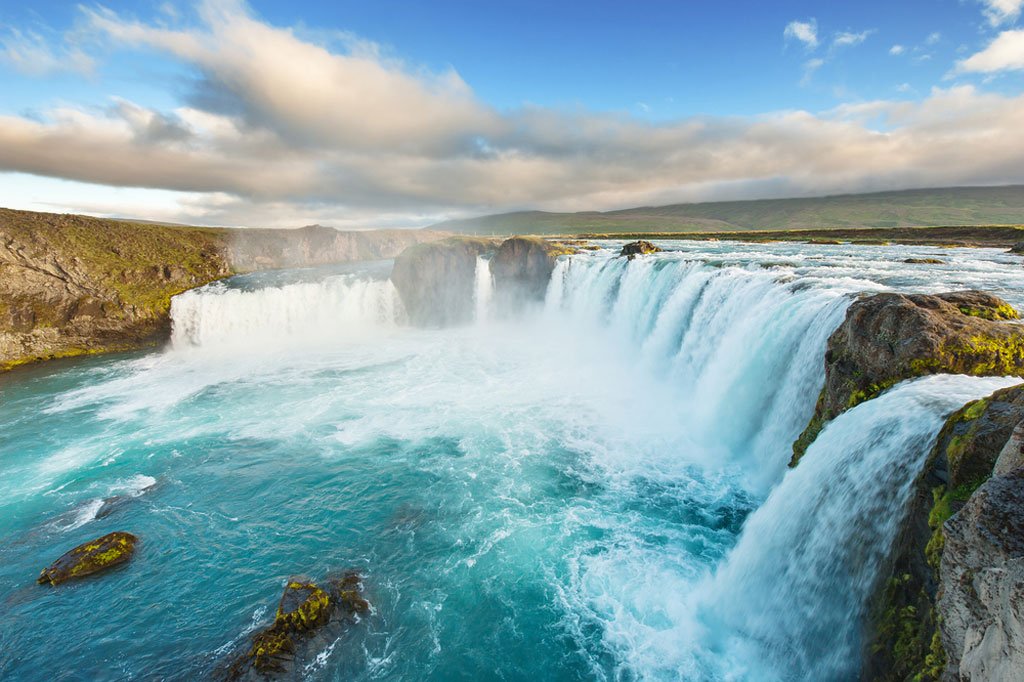
Kirkjufell at sunset.
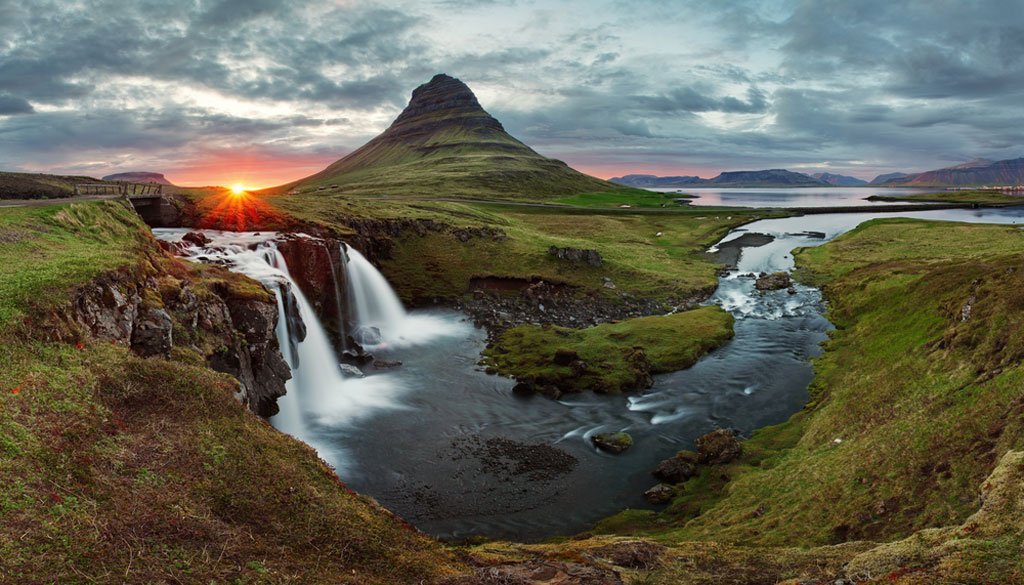
Incredibly blue pool Blahver at Hveravellir is actually a hot geothermal spring in the heart of Iceland.
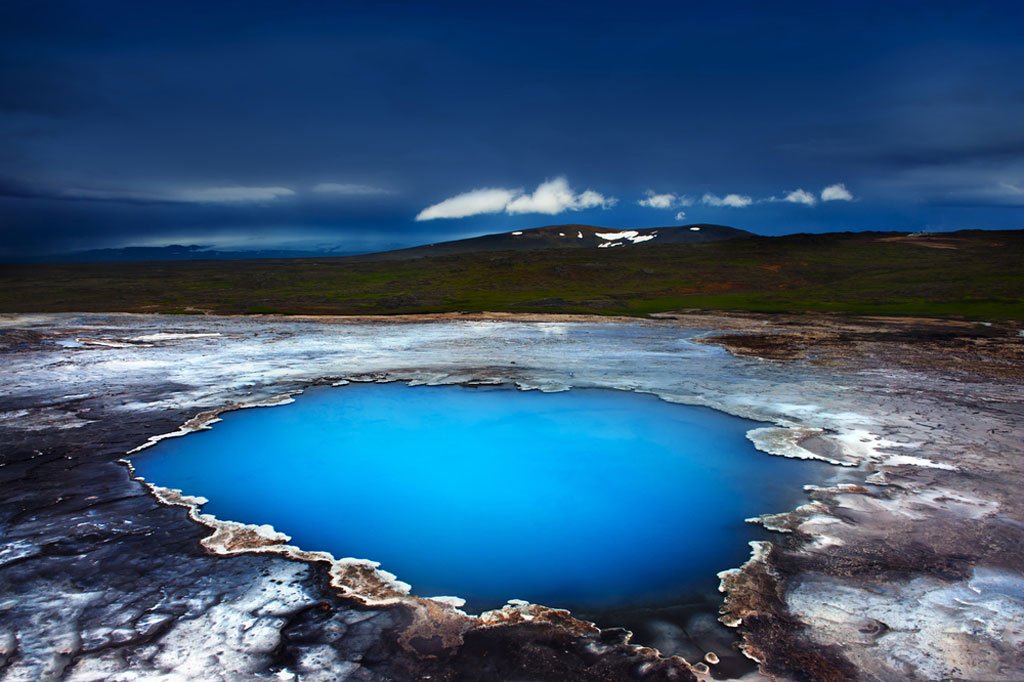
Thermal springs in Reykjavik, Iceland
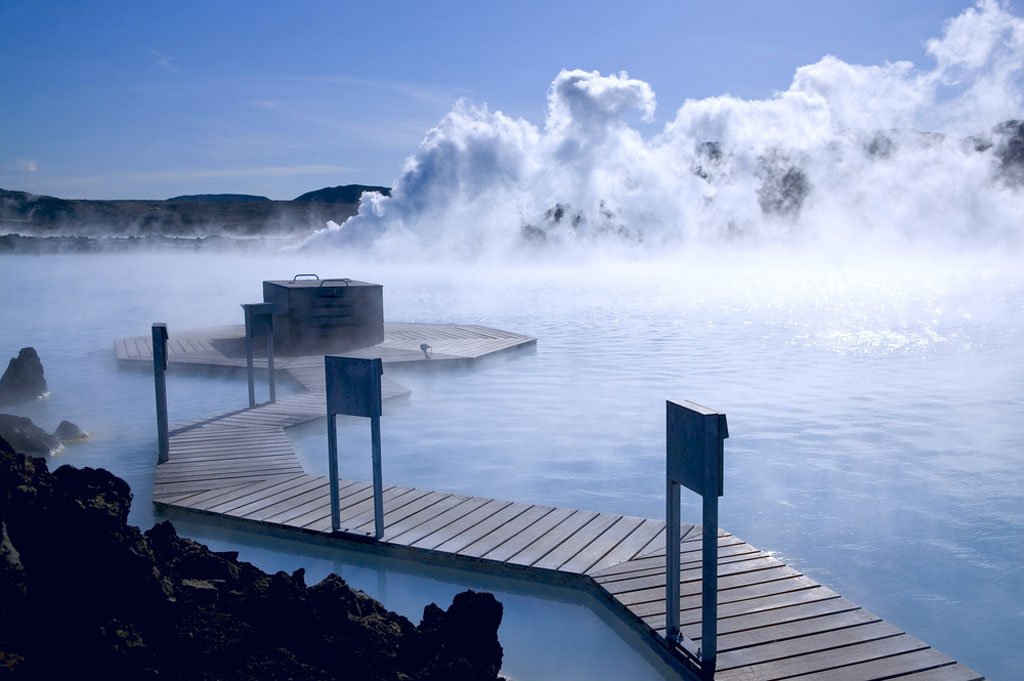
The Northern Lights dance over the glacier lagoon in Iceland.
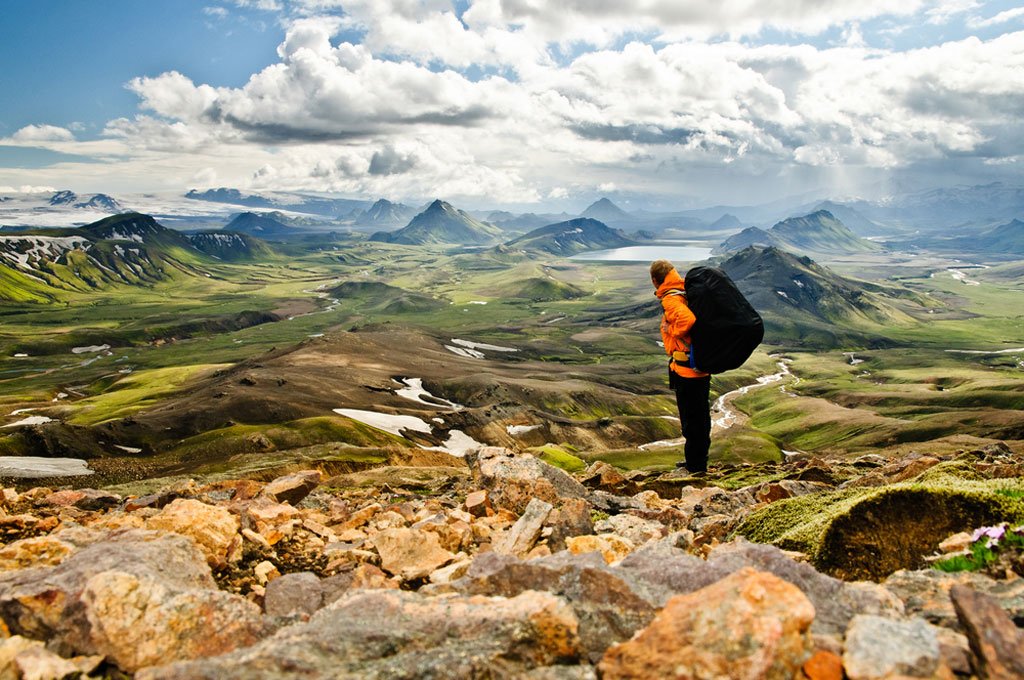
Hiking in the incredible jurassic wild landscape of green mountains, among glaciers and volcanoes
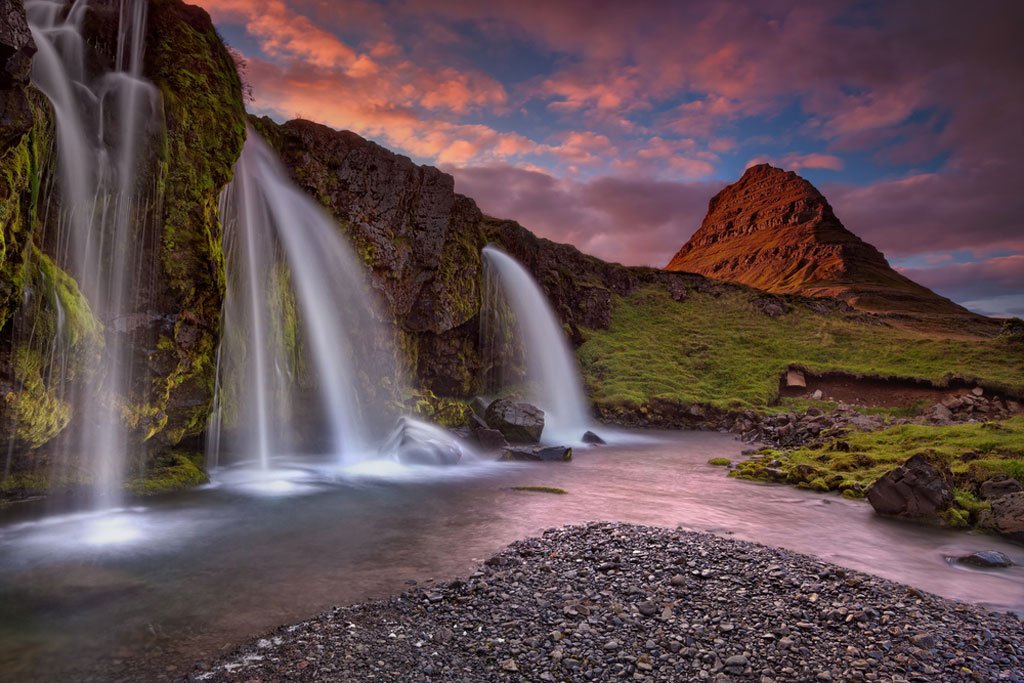
Extinct volcano in Iceland (Island). Sunset at Mount Kirkjufell (Church mountain) in the Snaefellsnes peninsula, Iceland, complimented by a beautiful waterfall.
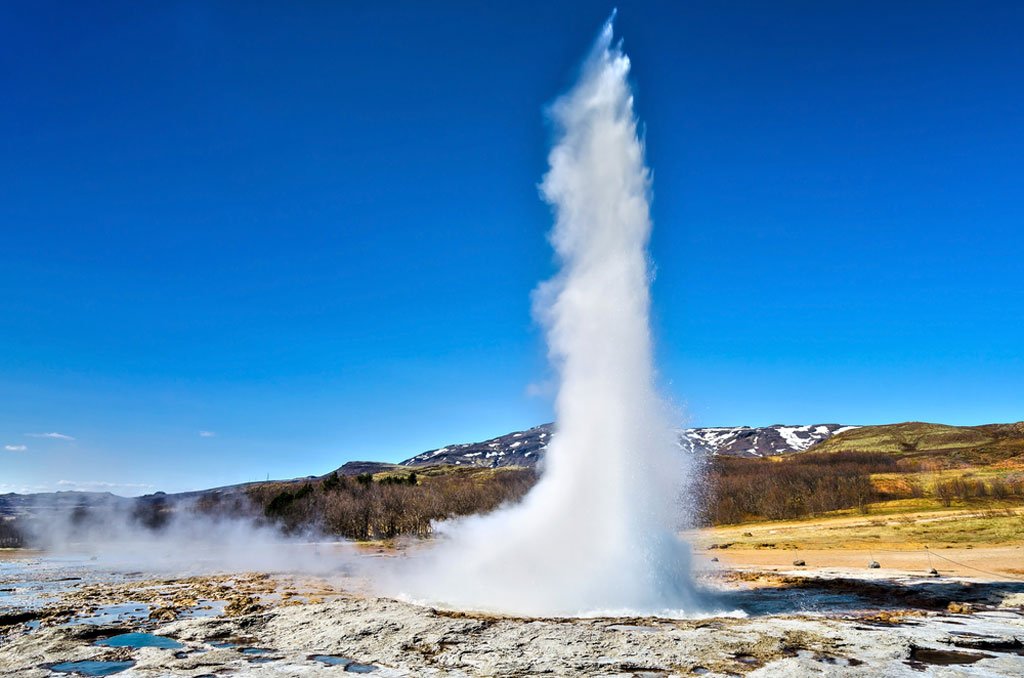
Eruption of Strokkur Geyser in Iceland
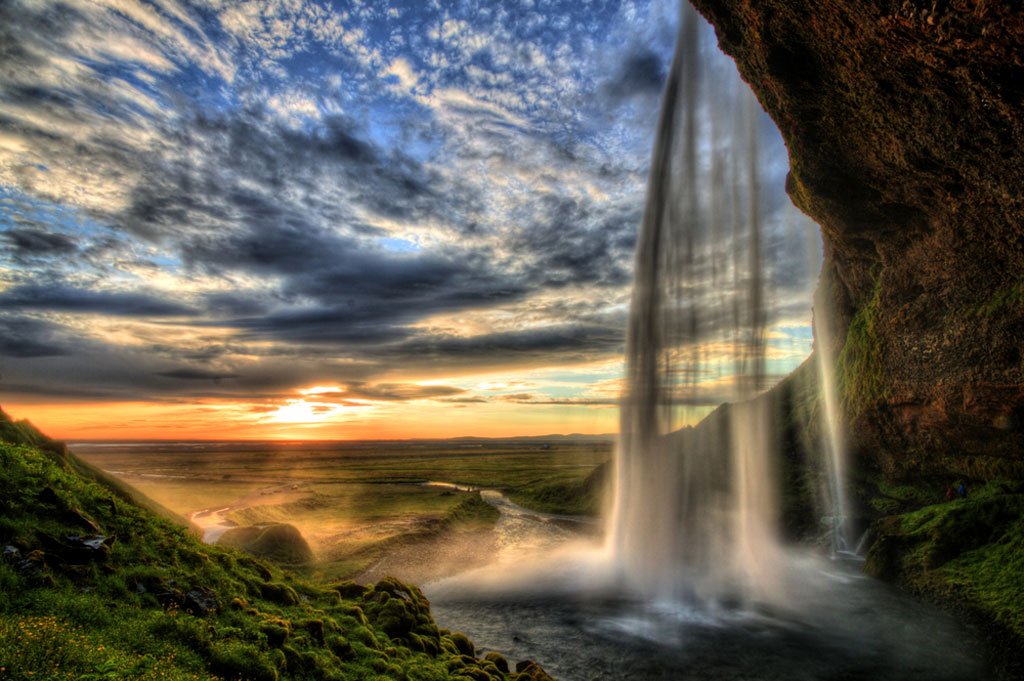
Seljalandfoss waterfall at sunset in HDR, Iceland
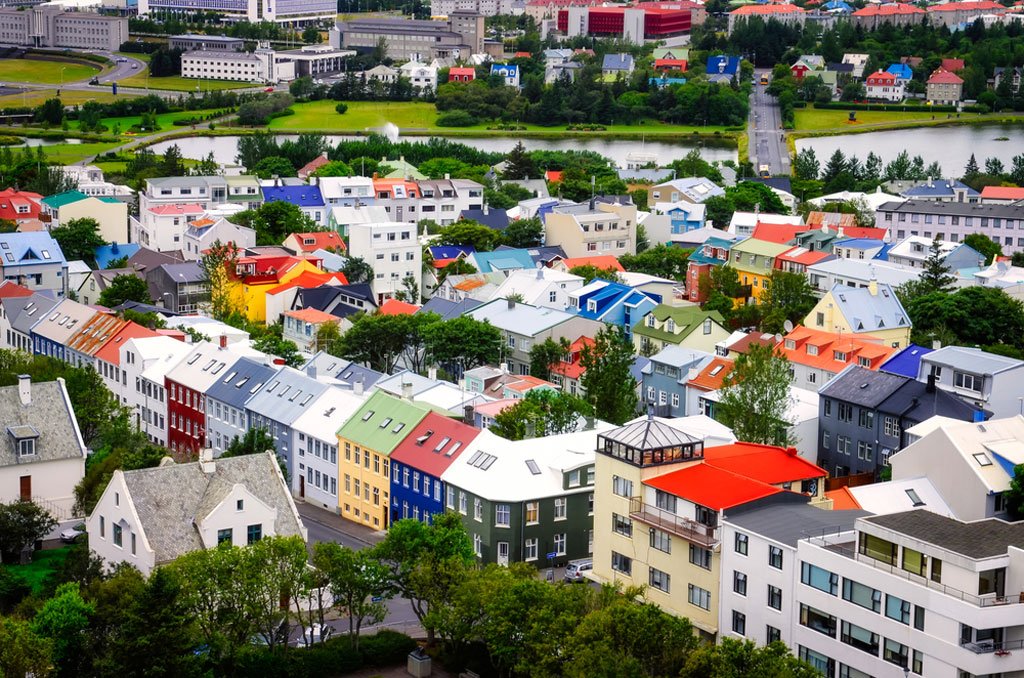
Reykjavik city bird view of colorful houses, Iceland
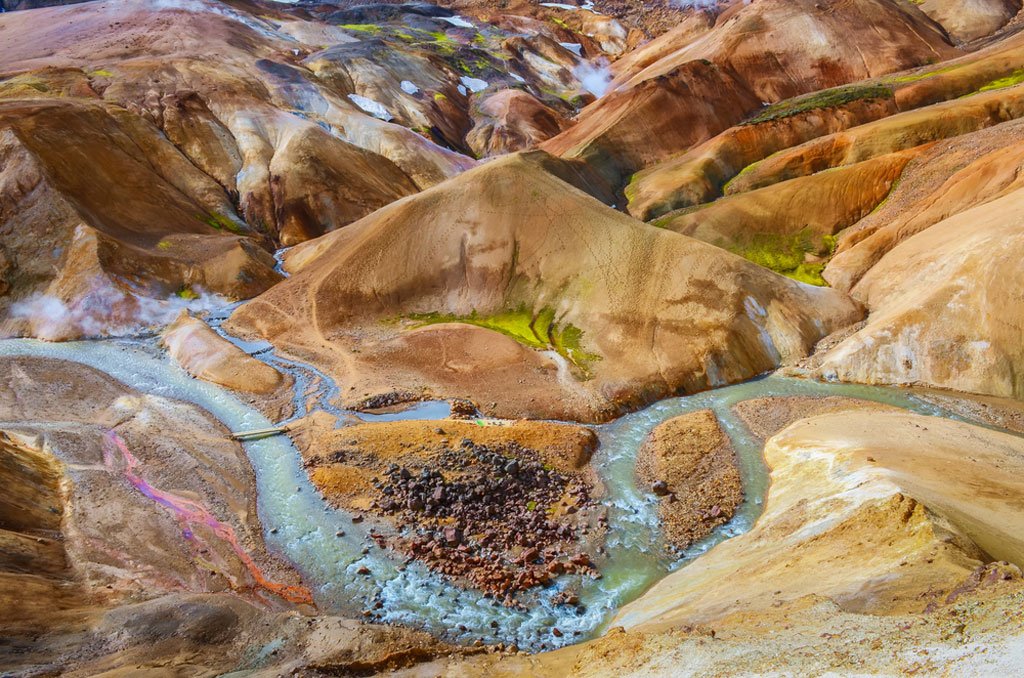
Iceland geothermal hot spring field Kerlingafjoll, Iceland
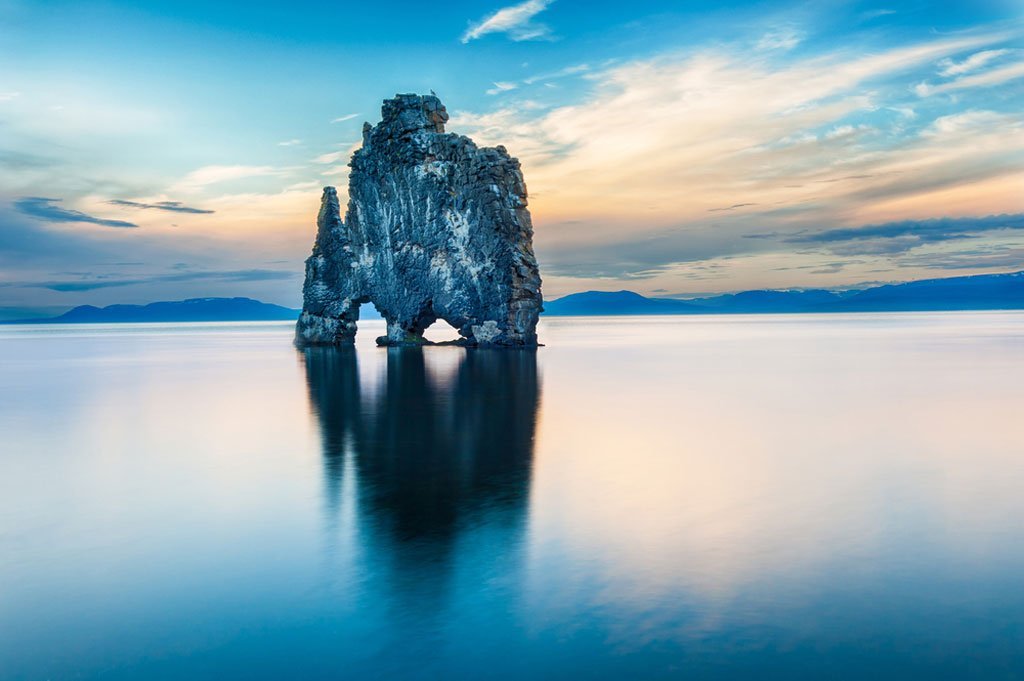
Hvitserkur is a spectacular rock in the sea on the Northern coast of Iceland. Legends say it is a petrified troll. On this photo Hvitserkur reflects in the sea water after the midnight sunset.
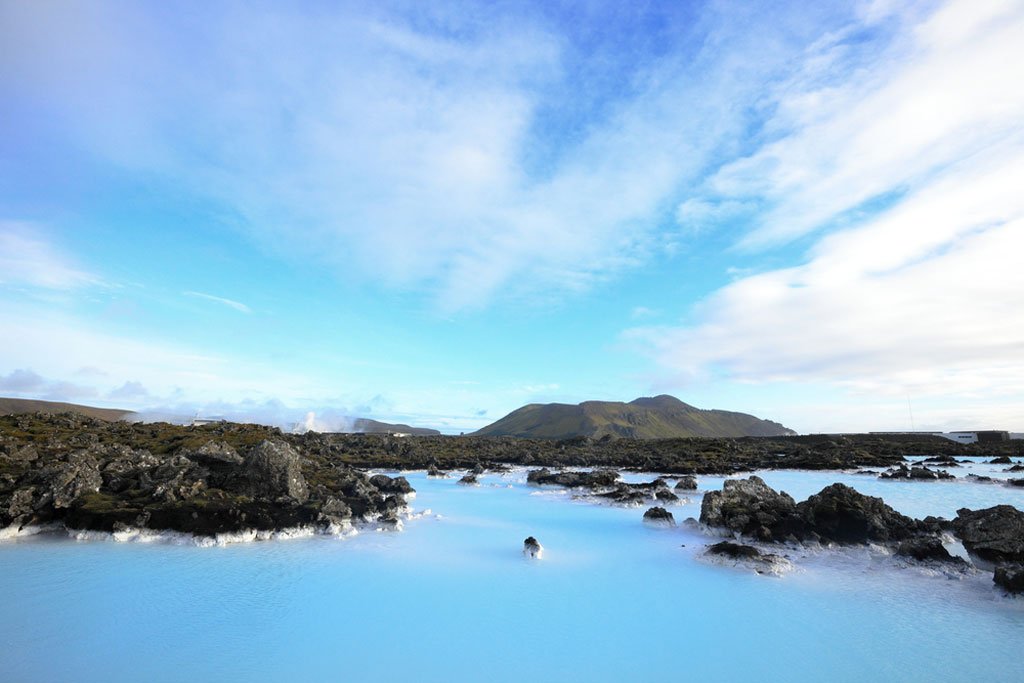
The famous blue lagoon near Reykjavik, Iceland
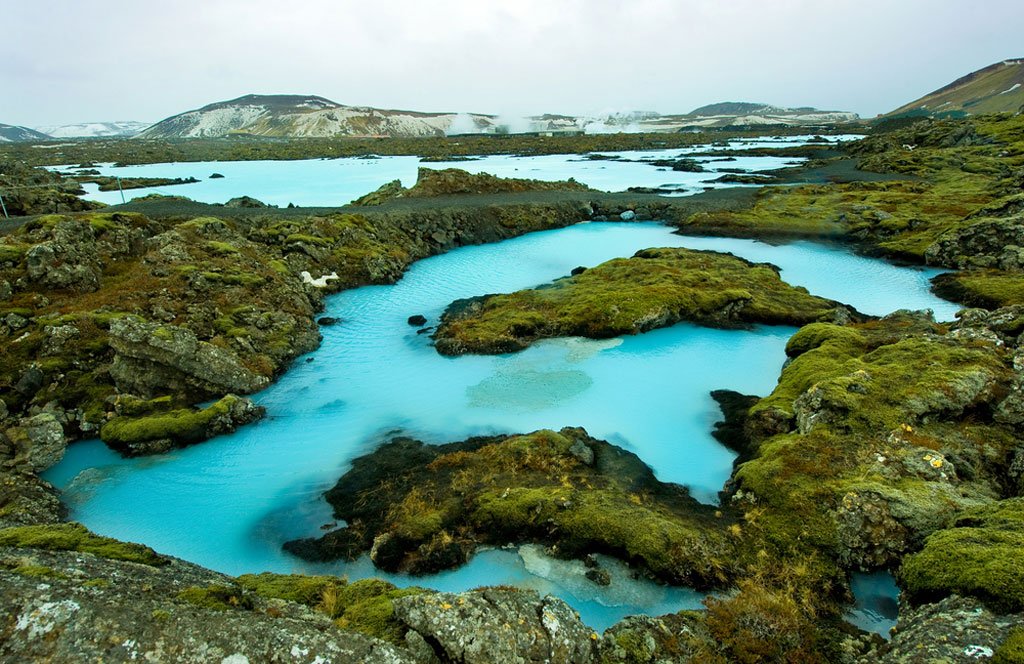
The blue water between the lava stones covered with moss just outside the Blue Lagoon resort of Iceland
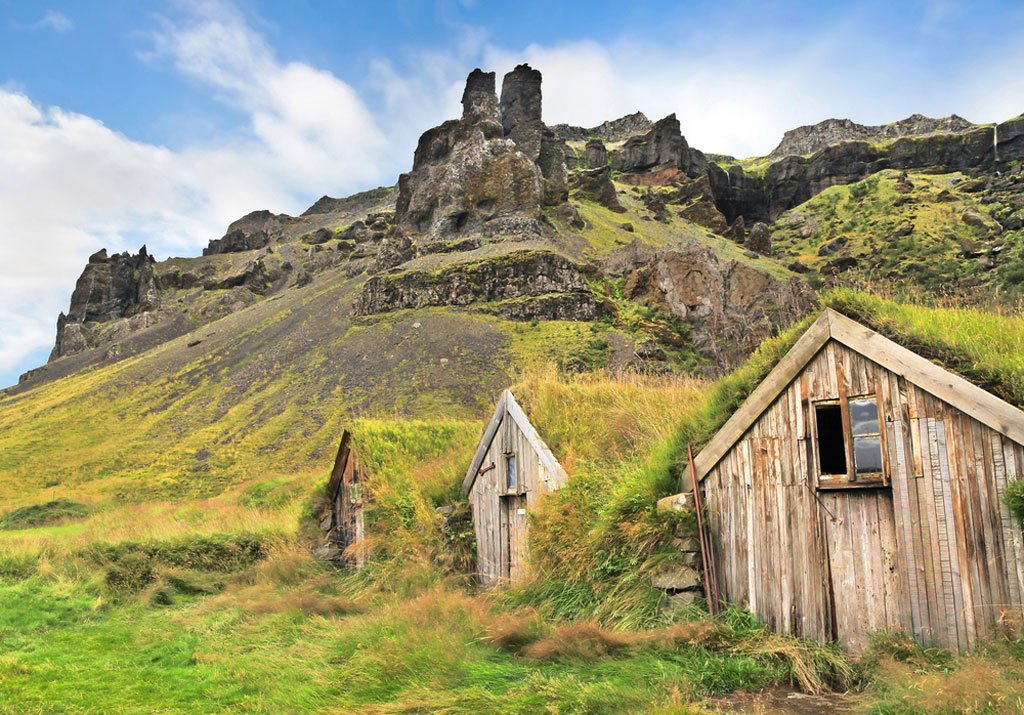
Beautiful landscape with traditional turf houses at Nupsstadur farm near Skaftafell National Park, Sandar region, Iceland
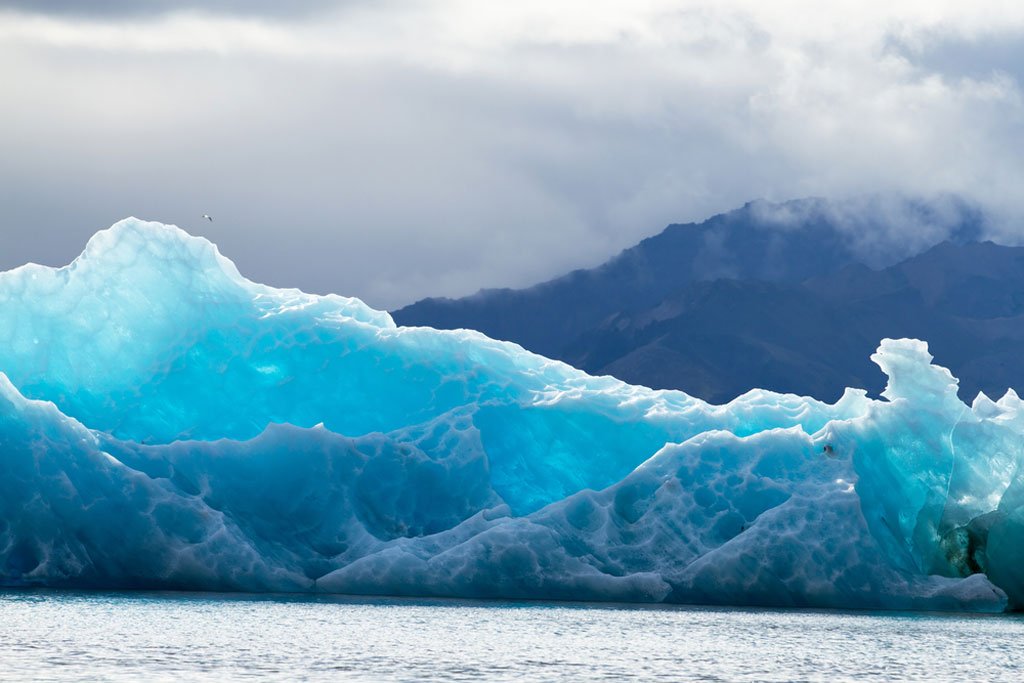
Blue ice at Icelake Jokulsarlon, Iceland
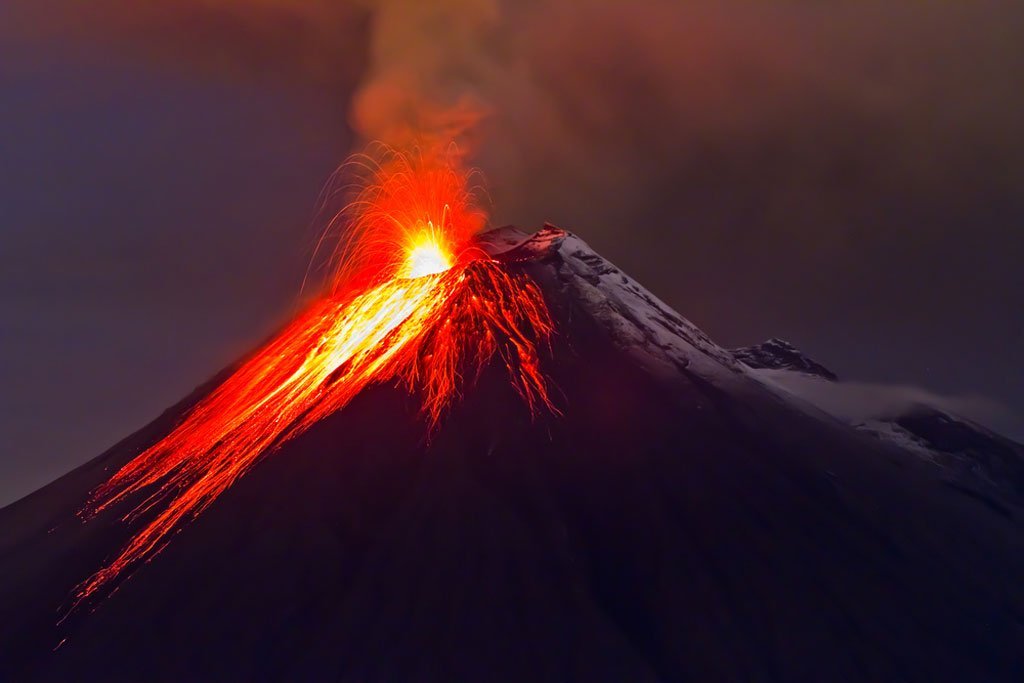
Eruption of the volcano with molten lava flowing on the slopes
![limitezero-tirolina-marc-3[6]](https://positivevibes.tv/wp-content/uploads/2014/05/limitezero-tirolina-marc-36.jpg) The zip line is a privately funded passion project of Englishman David Jarman. “Two villages in two countries, separated by a river 150 metres wide – a zipline just seemed obvious to me,” he said.
On a busy day the zip line takes about 24-30 people per hour, at the price of 15 euros per person. Jarman forsees the slide functioning 200 days a year: closing in the second half of November and the second half of February. It will bring employment to 5 to 7 people on both sides of the border.
The zip line is a privately funded passion project of Englishman David Jarman. “Two villages in two countries, separated by a river 150 metres wide – a zipline just seemed obvious to me,” he said.
On a busy day the zip line takes about 24-30 people per hour, at the price of 15 euros per person. Jarman forsees the slide functioning 200 days a year: closing in the second half of November and the second half of February. It will bring employment to 5 to 7 people on both sides of the border.
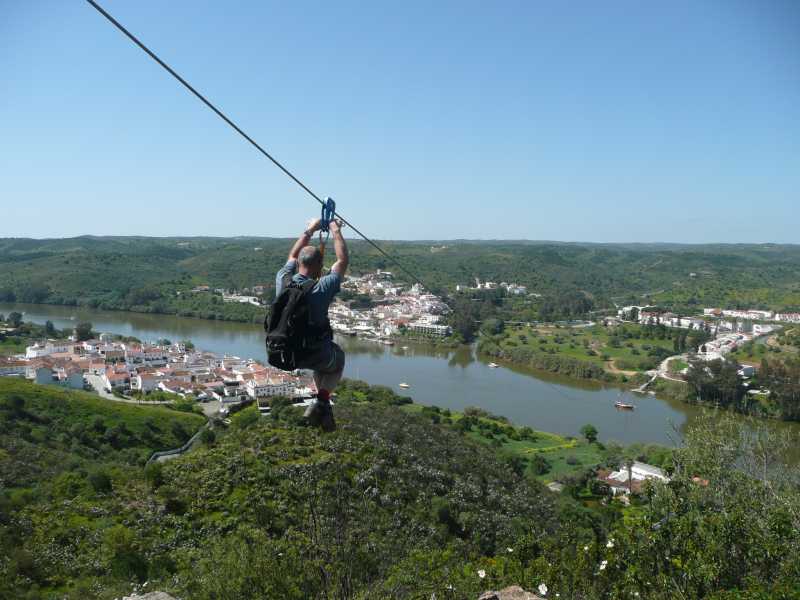
![limitezero-tirolina-rio-con-hombre-1[6]](https://positivevibes.tv/wp-content/uploads/2014/05/limitezero-tirolina-rio-con-hombre-16.jpg)
![limitezero-tirolina-rainer-viertlbock-2[2]](https://positivevibes.tv/wp-content/uploads/2014/05/limitezero-tirolina-rainer-viertlbock-22.jpg)
We all need a little guidance sometimes. This is great advice for everyone. Share this post with your friends and family by clicking the button below.
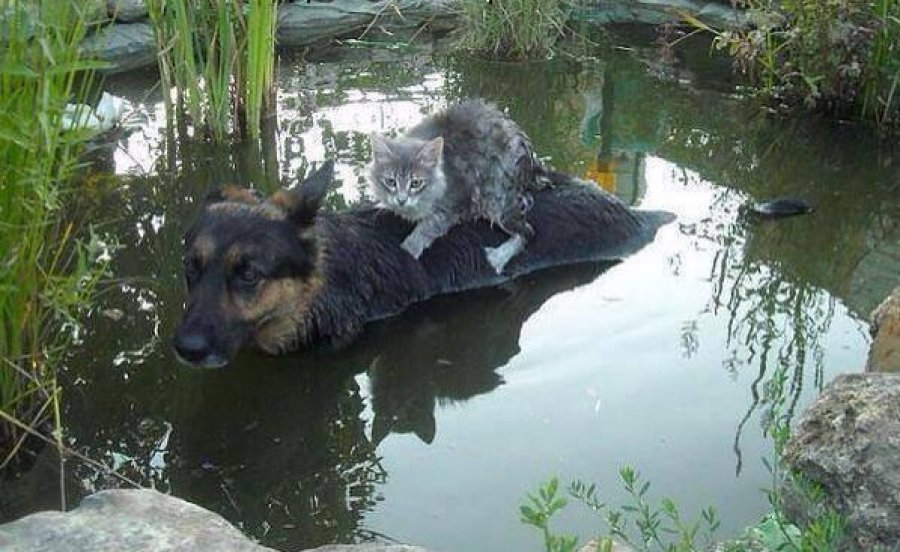 Animals give us another lesson about solidarity, love and the value of life. Startled cat, frantically clinging to the back of dogs who tried to find a way out of the water. Although in the eyes of the dog sees fear, he bravely moved through the water, determined to save himself and the cat.
This photo that goes Viral on internet was taken in Serbia during the flood which caused overflowing of the rivers that have burst into towns and villages, cutting off whole communities, while landslides have buried houses.
Animals give us another lesson about solidarity, love and the value of life. Startled cat, frantically clinging to the back of dogs who tried to find a way out of the water. Although in the eyes of the dog sees fear, he bravely moved through the water, determined to save himself and the cat.
This photo that goes Viral on internet was taken in Serbia during the flood which caused overflowing of the rivers that have burst into towns and villages, cutting off whole communities, while landslides have buried houses.

Flooded streets in Obrenovac, southwest of Belgrade, Serbia.

Two men stand in front of their home hit by severe floods in Obrenovac.

People paddle a boat on a flooded street in Obrenovac.

A playground surrounded by water in Obrenovac.

People try to defend their yard in Obrenovac.

Two men paddle a boat down a flooded street in Obrenovac.

A man stands in front of his house in Obrenovac.

Cars parked on a flooded street in Obrenovac.

Bosnian soldiers carry food and water supplies for people stranded in the Bosnian town of Maglaj, outside of Sarajevo.

A Bosnian military member carries a boy rescued from his home in Maglaj.

People are rescued from their flooded homes in Maglaj.

Volunteers ride a vehicle trough a flooded street in Obrenovac.

A man carries a child during the evacuation of a family in Obrenovac.

A family is evacuated by boat in Obrenovac.

Serbian emergency workers evacuate people from Obrenovac.

A police officer struggles to walk in a suburb of Belgrade, Serbia.

Bosnians look out over the flooding river Bosna north of Sarajevo.

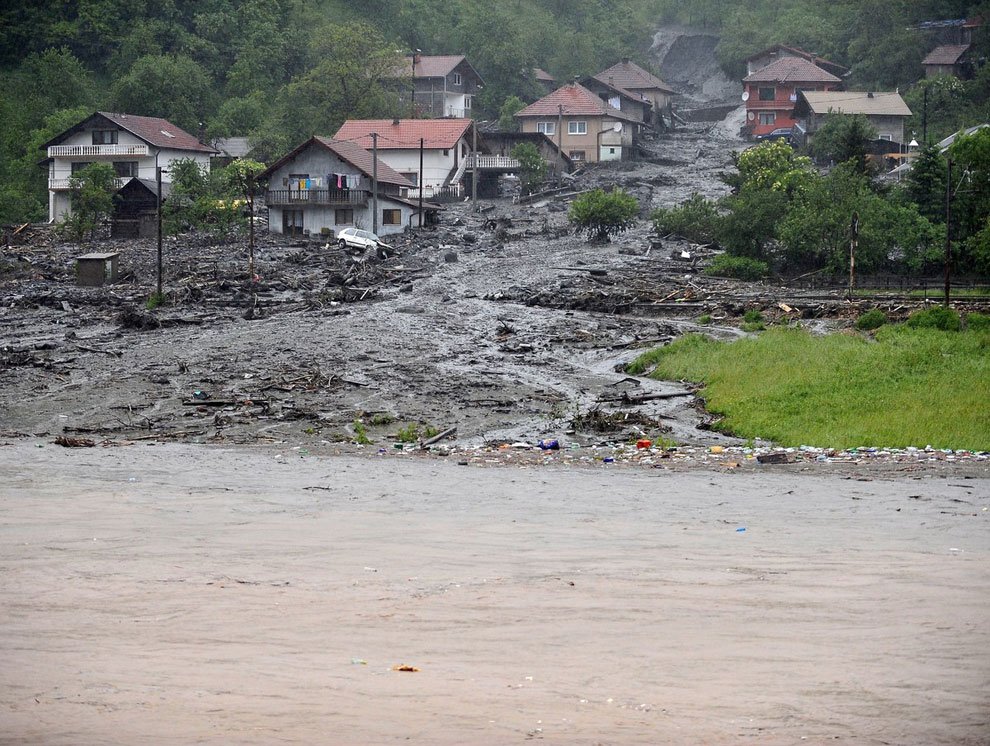
A landslide and floodwaters disturb the village of Topcic Polje, near the Bosnian town of Zenica,.

A flooded shopping center in Rajlovac, suburb of Sarajevo, Bosnia.

Sarajevo residents look at the rising river Miljacka on May 14.
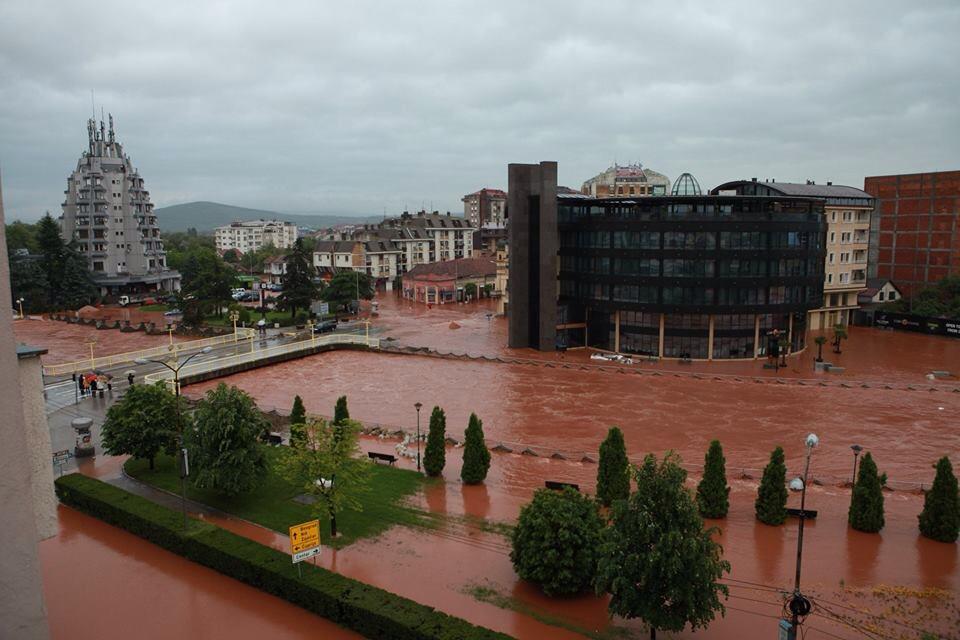
Paracin Serbia , foto Bokac. River Crnica
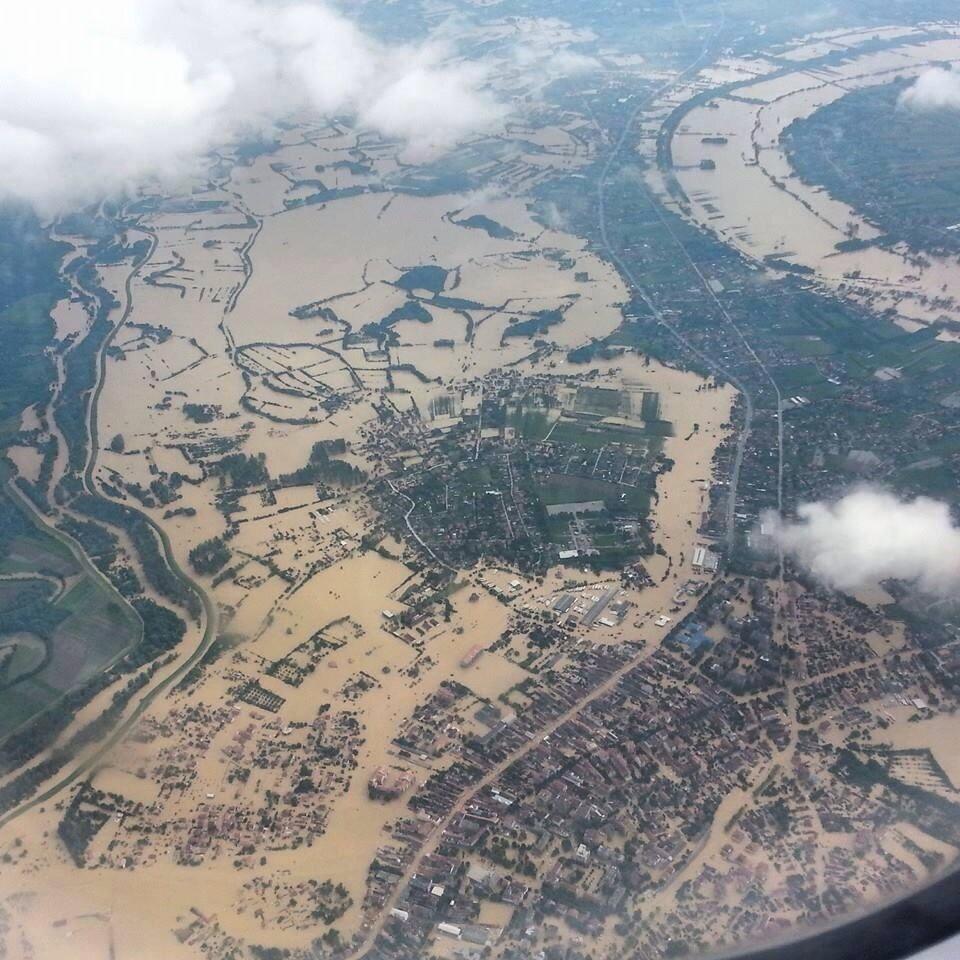
The town of Obrenovac, 30 kilometeres (18 miles) southwest of Belgrade.
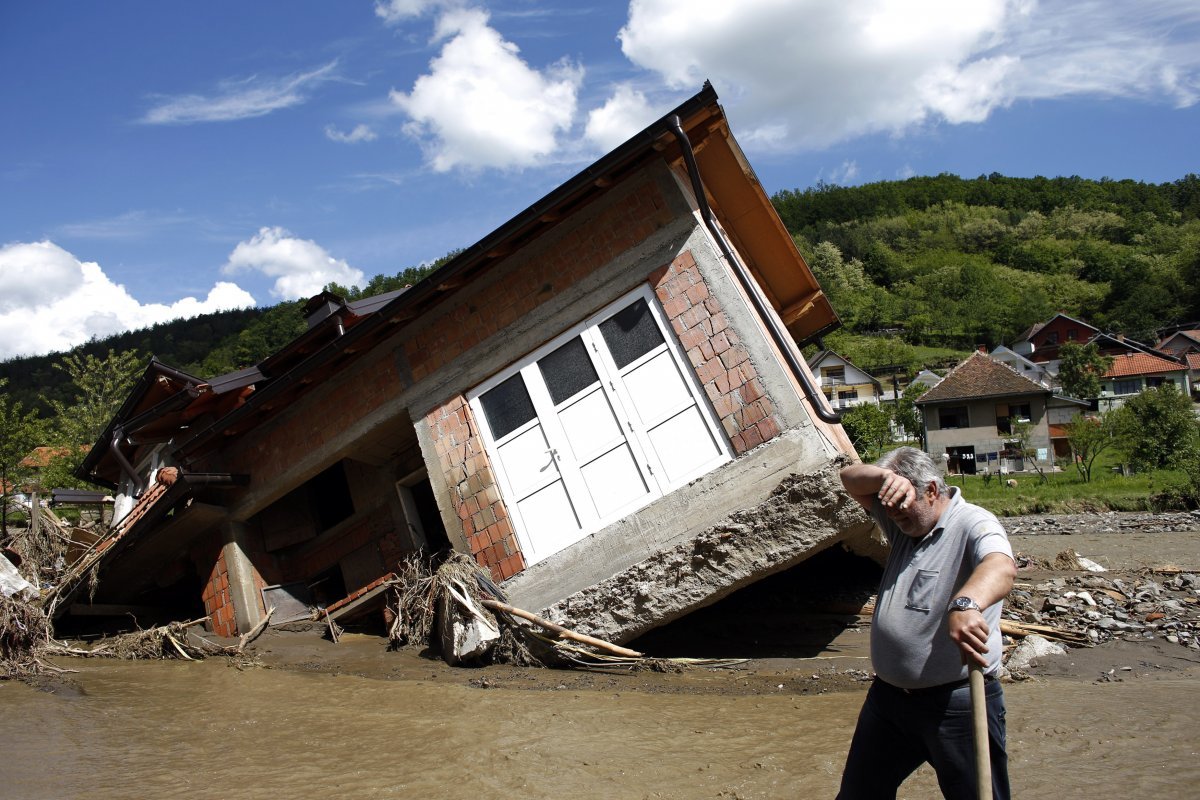
A man reacts near a house tilted by floods in the village of Krupanj, west from Belgrade, May 19, 2014.